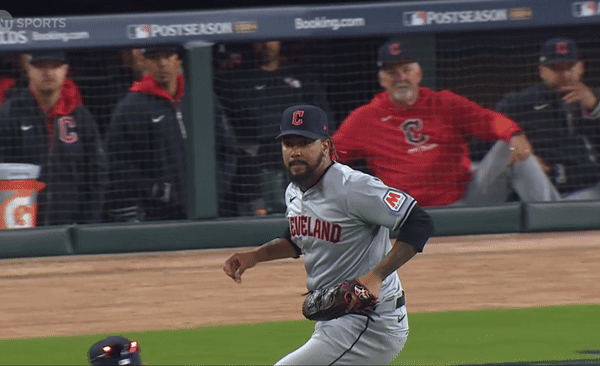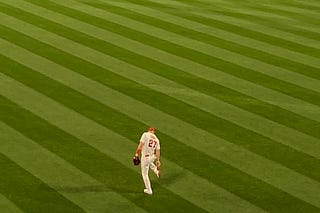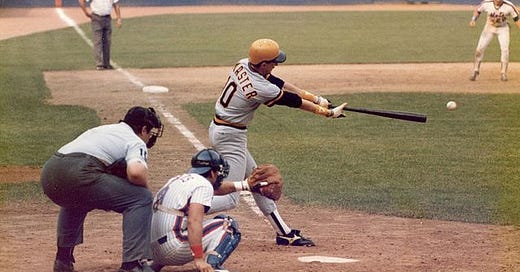

Discover more from Pebble Hunting
Emmanuel Clase's 33 Unearned Runs
The pitcher who is better than anybody in history at suppressing earned runs has allowed a bunch of unearned ones. Does it mean anything?
I wrote a bit about Emmanuel Clase earlier this week, and talked about Emmanuel Clase on the Windup this week, but there’s one last thing to resolve about Emmanuel Clase—
The most interesting thing about Emmanuel Clase’s B-Ref page is that he has the lowest ERA in history1, by a lot. His career ERA is 1.67. The next lowest is Mariano Rivera, at 2.21. He’s only thrown 300 innings in his career and he hasn’t had his decline phase yet, but still, that’s extremely interesting and he’s amazing.
The second most interesting thing is less important, but it’s curious and demands explanation. It’s his unearned runs.
If we look at the last one million runs given up in the major leagues—that takes us back to 1975—about 9 percent were unearned. That’s the baseline for normal.
In that span, there were only 42 pitchers for whom at least 15 percent of their runs allowed were unearned. There were only four pitchers for whom 20 percent were unearned. Only two pitchers reached 22 percent. Only one pitcher reached 23 percent, and that pitcher is Emmanuel Clase.
And 37 percent of Emmanuel Clase’s runs are unearned!
*
You can’t just ignore unearned runs. Consider two pitchers having these innings:
Pitcher A: Out, out, grounder to the first baseman. First baseman biffs it. Next batter strikes out. Inning over.
Pitcher B: Walk, out, walk, out, walk, grounder to the first baseman. First baseman biffs it. Two runs score. Next batter strikes out. Inning over.
Neither pitcher allowed any earned runs, but they obviously didn’t pitch equally in those innings. The one who allowed the unearned runs allowed those runners to reach base; he pitched much worse. A lesser pitcher is more likely to give up unearned runs than a better pitcher is. This is simple stuff.
**
And sometimes it’s even more than that.
Pitcher C: Out, out, grounder to the first baseman. [Inning over.] [Next inning:] Single, double, triple, homer.
Pitcher D: Out, out, grounder to the first baseman, first baseman biffs it. [Inning continues.] Single, double, triple, homer.
Pitcher C allowed four runs, all of them earned. Pitcher D allowed five runs, but none of them is earned, because they all came after the third out supposedly should have been recorded, and nothing after that gets blamed on him. Pitcher C has the worst ERA in baseball (and clearly isn’t very good). Pitcher D has the best ERA in baseball (and clearly isn’t very good.)2
So you can see, sometimes an error lets the pitcher off the hook for all sorts of subsequent awfulness that really had nothing directly to do with the error.
***
So if you see a bunch of unearned runs, you can probably conclude that the pitcher had at least a little bit to do with them, and maybe a lot to do with them, and maybe those unearned runs are actually a sign he’s considerably worse than his ERA. Since Emmanuel Clase’s ERA is of historical significance, we do have to at least look into this.
****
There are three types of unearned runs:
1. Runs that score after a third out should have been made.
2. Runs that score because a baserunner was able to advance further than he should have (including advancing to first base).
3. Zombie runners scoring.
This last one is important. In 2022, MLB permanently implemented the new extra-innings rules, where a free runner starts each inning after the ninth on second base. If that runner comes in to score, it’s charged to the pitcher as a run, but not as an earned run.
For a pitcher like Clase, who is frequently brought in to pitch the 10th inning, this will expose him to a lot of extra unearned runs.
I watched all 33 of Clase’s unearned runs to see how much he’s to blame. Here’s how they break down:
Errors extending innings: 10
Errors allowing runners’ advance: 8
Zombie runners: 15
And here’s what I took away:
1. Zombie runners are doing a ton of the work in the fun fact that starts this piece. Without them, Clase would still have allowed the highest percentage of unearned runs in the past half-century, but more narrowly—only 24 percent of his runs would be unearned—and largely because he allows so few earned runs.
Still, 18 unearned runs at this stage in his career, for a pitcher as great as him, is a lot. Mariano Rivera allowed 25 unearned runs in his entire career, four times as many innings. Billy Wagner allowed 30. Kenley Jansen, 28, and those include his zombie runners scoring. E T C.
2. But generally speaking, Clase’s high rate of unearned runs aren’t obviously revealing some big deficiency that his ERA is obscuring. It’s not as though Clase is falling apart after errors behind him, and it’s definitely not that Clase is like Pitcher D up there, giving up a bunch of moral-hazard rallies after an inning gets extended and he’s off the hook. There are some real hard-luck errors behind him, too; a couple of double plays fully botched3, this one bizarre play where Mike Trout scored and then as he was walking back to the dugout kicked the ball away from the catcher, setting up another run. (I don’t think that should be allowed.)
3. But there is one deficiency that shows up: Clase’s own defense has been terrible! He has a .900 fielding percentage in his career. Pitchers leaguewide have a collective .950 fielding percentage, so he makes errors at twice the league rate.
In May this year, he dropped a flip from the first baseman that would have ended the game. Instead it tied the game.
In 2021, he dropped another throw at first base. It would have been an inning-ending double play; instead, the go-ahead run scored.
In 2019, he fumbled a tapper and then threw wildly to first. Instead of ending the inning, it set up another error by his teammate, and two runs scored.
On top of those, there was a play in 2021 where Clase fielded a ball hit back to him and threw wildly to second. For some reason the shortstop wasn’t covering the bag, and the error was given to the shortstop (reasonably; it was a completely befuddling play by the shortstop) but the error could have easily gone to Clase for the throw.
Those four plays by Clase led to five of his unearned runs, and made me appreciate just how close the Tigers came to putting the tying run on base in the ninth inning Thursday:
4. To go back to the zombie runners. Those are unearned runs. But, of course, they don’t have to score. The better you pitch, the less likely it is that they’ll score. And to the degree there is anything Clase has done that is slightly disappointing in his career, it’s let zombies in.
The average zombie runner scores 57 percent of the time. For most relief aces, it’s even lower than that, and if you told me Clase’s rate was half of that I’d consider my expectations met. But in his career, Clase has actually allowed 63 percent of his zombie runners to score. In zombie innings, batters have hit .324/.341/.351 against him.
I don’t think that’s particularly telling (it’s fewer than 100 plate appearances), and I certainly don’t think it’s predictive. But a full accounting of Clase’s performance so far would include it. He has allowed more zombie runners to score than an average pitcher, and significantly more than the rest of his pitching would lead you to expect.
******
So there you go: Emmanuel Clase, the pitcher with the best career ERA of all-time, is a small liability at defense and he has underperformed somewhat in a specific high-leverage situation. These two things have contributed to a statistical quirk on his player page, which further reflects the era he pitches in, but doesn’t cause us to dramatically reevaluate his standing as (so far) one of the greatest relief pitchers in history. Now, when you see that little curiosity on his B-Ref page, you’ll know.
Thanks to Daniel Hirsch and Baseball Reference for research help on zombie runners scoring.
Live-ball era, minimum 300 innings
And Pitcher E: Out, grounder to the first baseman, first baseman biffs it, single, double, triple, out, homer. Pitcher E allows five runs, but exactly three are earned! It’s a weird system.
ERA math undersells the damage of a botched double play, because it treats it as only one lost out rather than two.
Subscribe to Pebble Hunting
I'm writing about baseball & the good life. Contact at pebblehunting@gmail.com.
















banger article. i wonder if Clase's poor fielding is at all related to the fact that he may have allowed less contact with the ball over his entire career and never learned to be as sharp as other pitchers when dealing with balls in play. suffering from success, as it were
sooooooo…